The water vole is a species of rodent found throughout much of the UK and Europe, but has undergone a serious decline in numbers due to a mix of habitat loss and degradation, and predation by the introduced American mink.
Sometimes mistaken for the brown rat, the water vole is also known by the name of water rat and in fact, the character of ‘Ratty’ in The Wind in the Willows was actually a water vole.
Learn more about the water vole with our expert guide by the Mammal Society:
What is the scientific name of the water vole?
The scientific name of the water vole is Arvicola amphibius.
The other two species in the Arvicola genus are the montane water vole (A. sherman) and the southern water vole (A. sapidus), neither of which are found in the UK.
The European water vole is sometimes known as northern water vole, the water dog, or even water rat in some areas around the country. The character of ‘Ratty’ in The Wind in the Willows was actually a water vole rather than a rat species.
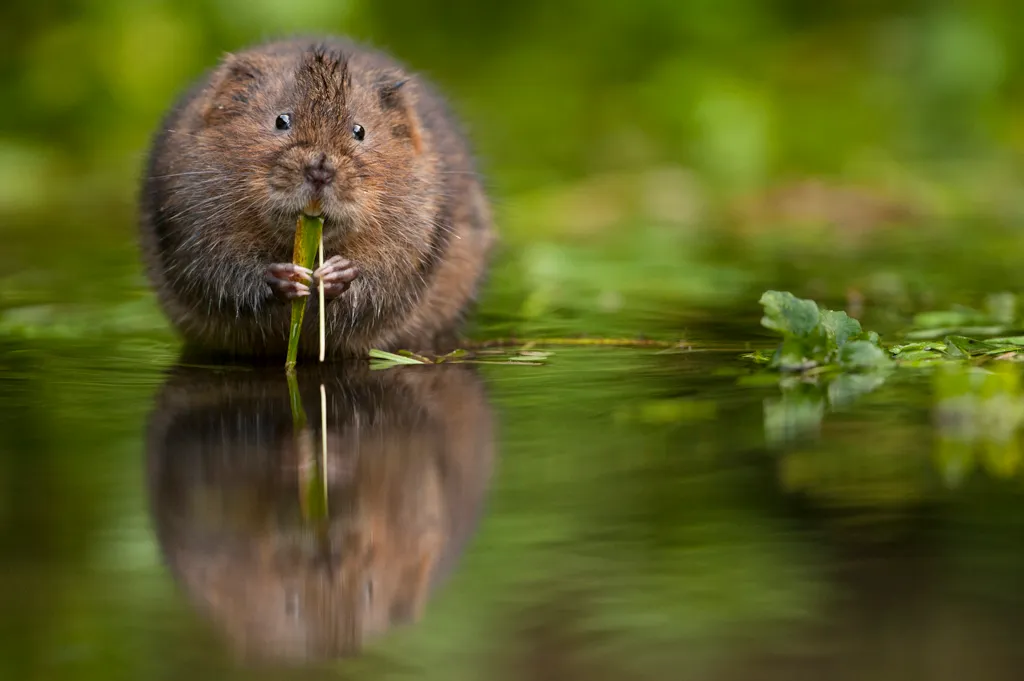
It is the only water vole found in the UK, but is absent from Northern Ireland and the Republic of Ireland.
Learn more about rodents in the UK:
However, there are some other UK species in the same family (Cricetidae) as the water vole. These include the bank vole (Myodes glareolus) and field vole (Microtus agrestis).
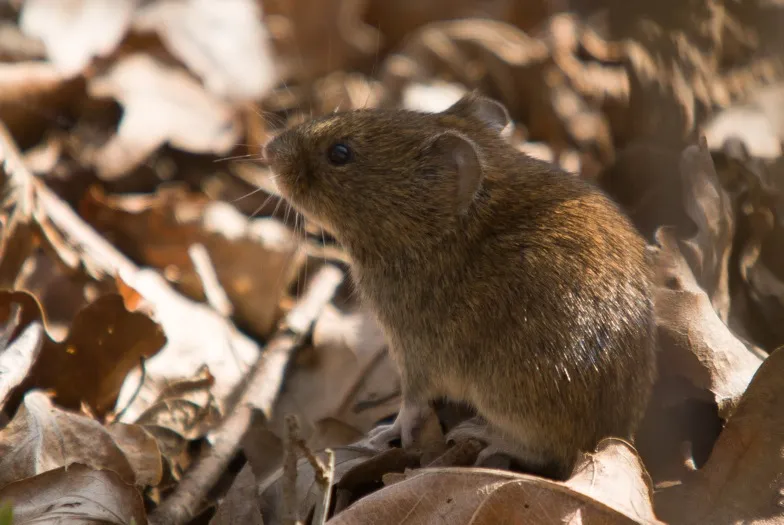
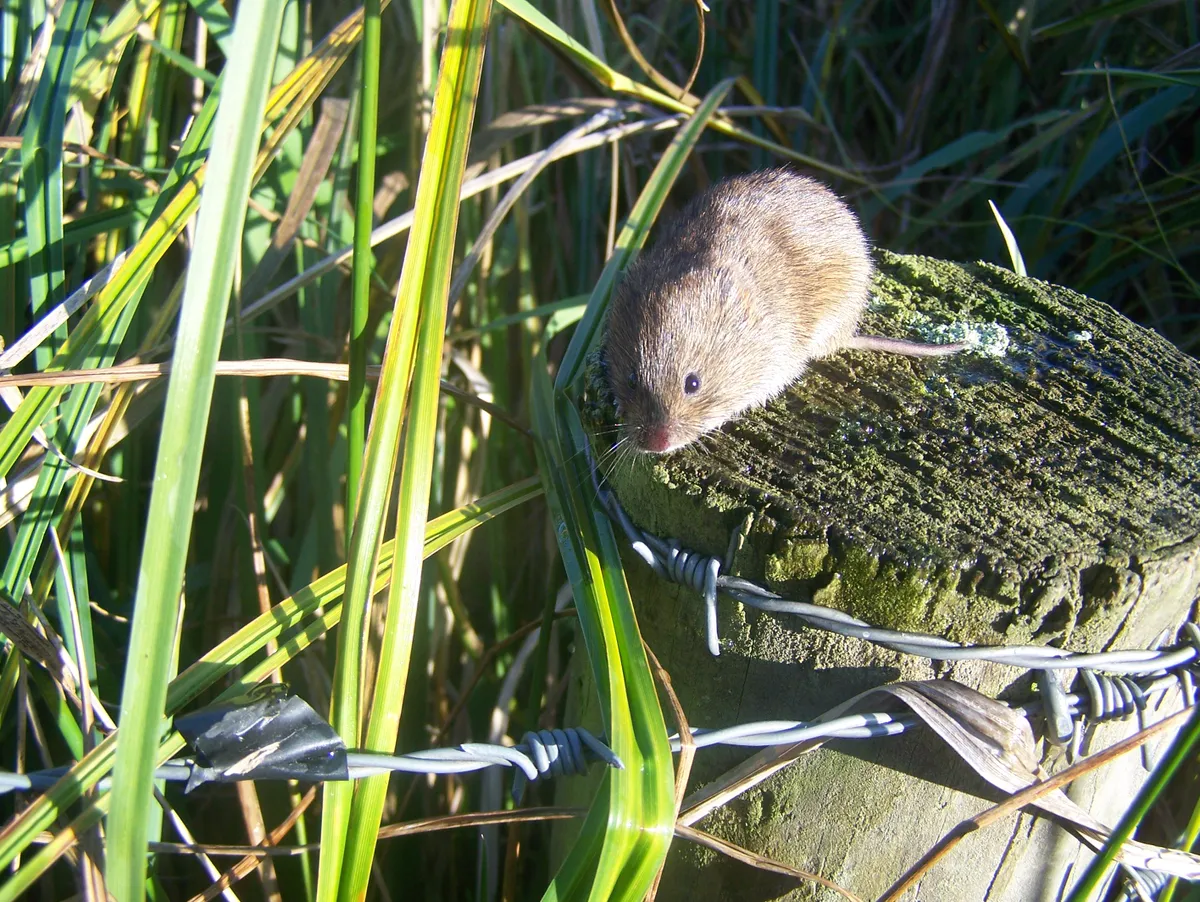
How to identify water voles
Water voles are much larger than other species of vole in the UK at 14-22cm compared to 9-12 cm for the other voles mentioned above. They are actually more likely to be confused with the more similar-sized brown rat (Rattus norvegicus).
Look out for the more chestnut brown colour of a water vole compared to rats which have grey/brown top fur and a grey underside. Rats also have more pointed muzzles than water voles, longer, hairless tails and more prominent ears.
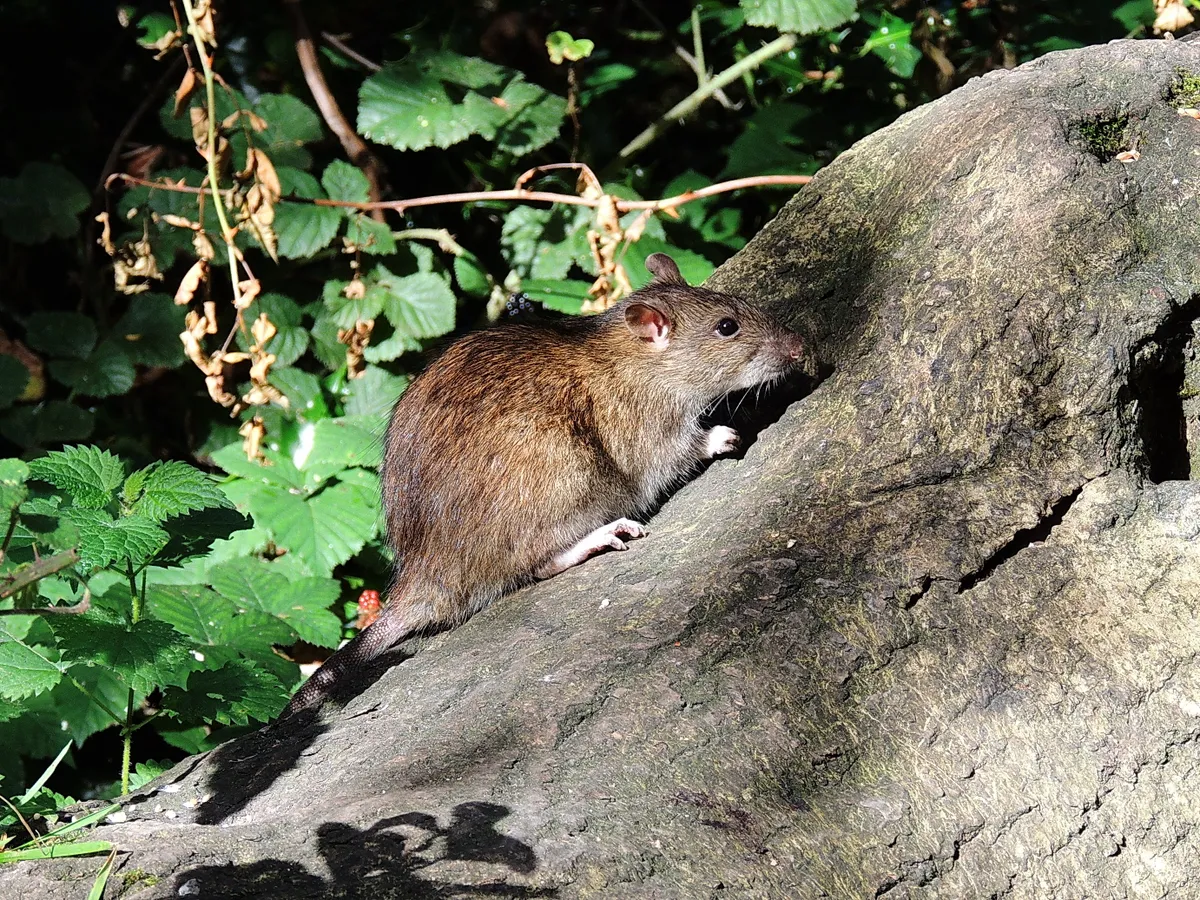
Another clue can be how much of the animal you can see when it is swimming. When a water vole swims, its whole body is seen above the water, whereas when a rat swims, only the head is visible out of the water.
More details on how to tell the difference between a water vole and a brown rat.
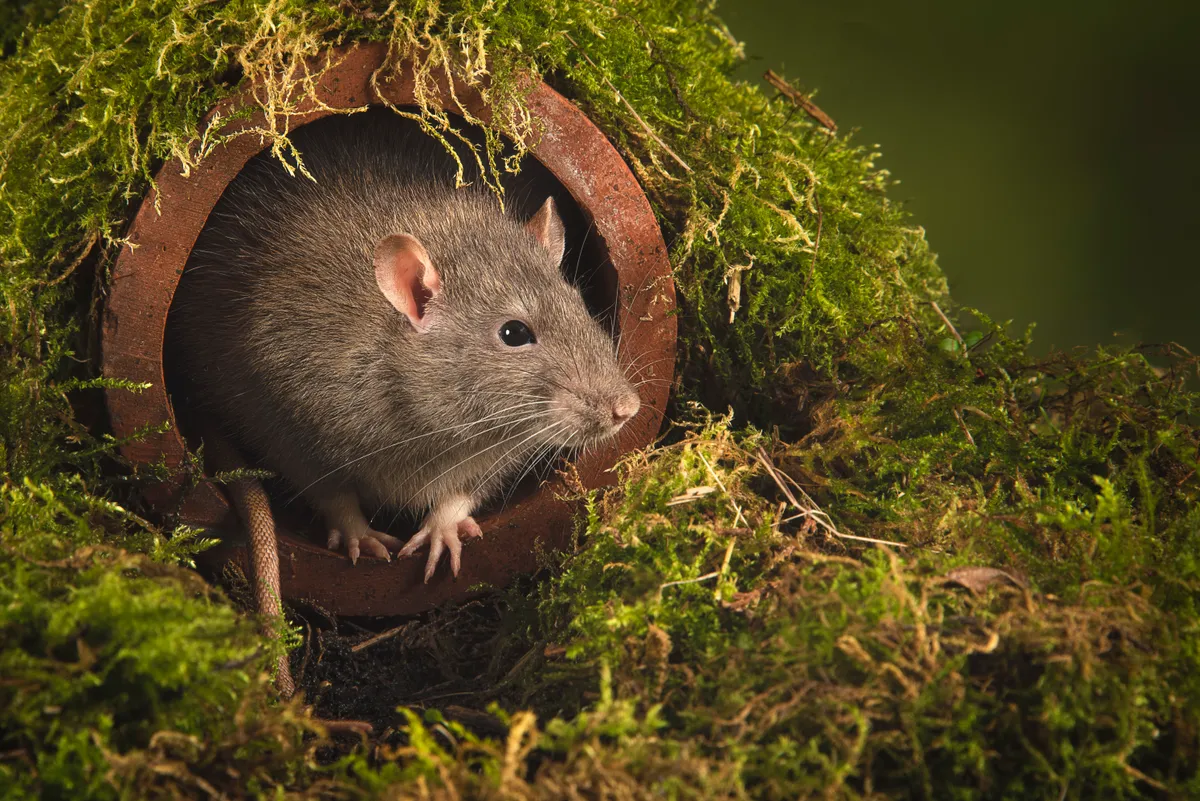
Where are water voles found?
In England, the water vole is found across the Midlands, East Anglia and southern England, the Isle of Wight, the Isle of Sheppey, and North Wales, though within these core areas, the population is fragmented. Its distribution is patchy in northern England, the rest of Wales and Scotland.
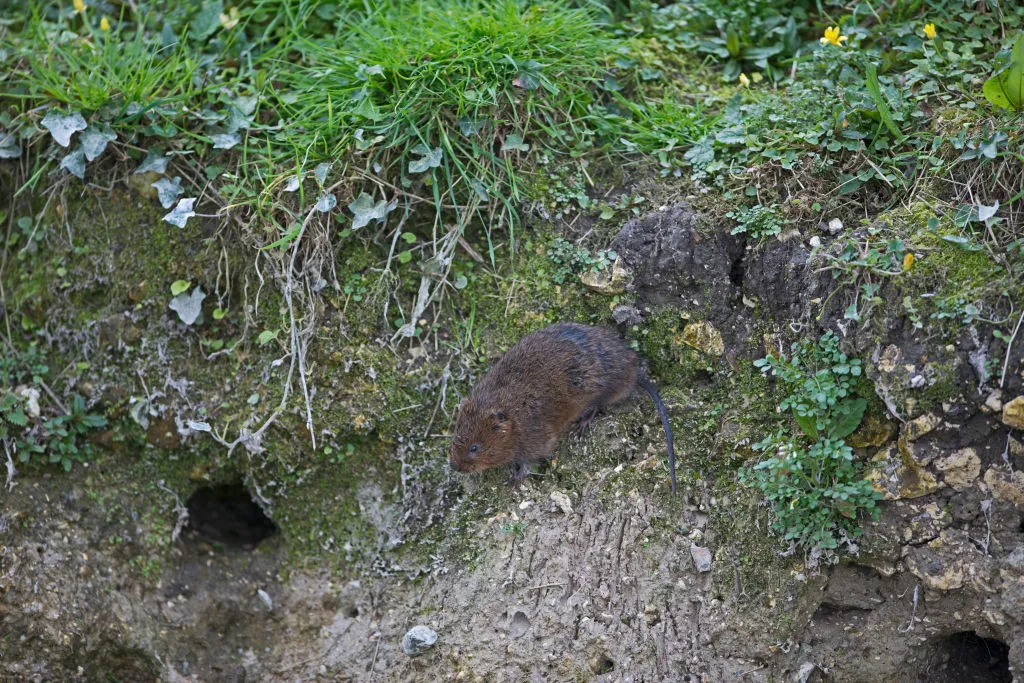
The water vole is absent from Cornwall, the Isles of Scilly, the Isle of Man, the Channel Islands, the Scottish Islands (with the exception of terrestrial/fossorial populations on small islands in the Sound of Jura), and both Northern Ireland and the Republic of Ireland.
This species is found throughout much of Europe and, according to the IUCN Red List, extends as far as the Lena Basin and Lake Baikal in Siberian Russia and extends north of the Arctic circle and south into Iran and the Near East.
How many water voles are in the UK?
Our latest population estimate for water voles, published in the Mammal Society Red List of British Mammals (2020) was 132,000 in Great Britain. This can be broken down as: 77,200 estimated in England, 50,000 in Scotland, and 4,500 in Wales.
What habitats do water voles live in?
Water voles are found in a wide variety of wetland habitats. They have a general preference for still or slow-flowing water, with lush riparian bankside vegetation and steep, earthen banks into which they can burrow. However, water voles can be found in a range of sub-optimal habitat too, including seasonally dry or over-shaded ditches.
Please note that external videos may contain ads:
How have water voles adapted to live near the water? | Biology - The Burrowers
Although most water voles in Britain have an aquatic lifestyle, there is a second form which lives entirely on land (usually grasslands), which is known as fossorial. In Scotland, where water voles are often black in colour (pictured above) rather than a rich chestnut brown, there is a well-publicised fossorial water vole population in Glasgow which has no reliance on water bodies but instead has colonised areas of rough grassland.
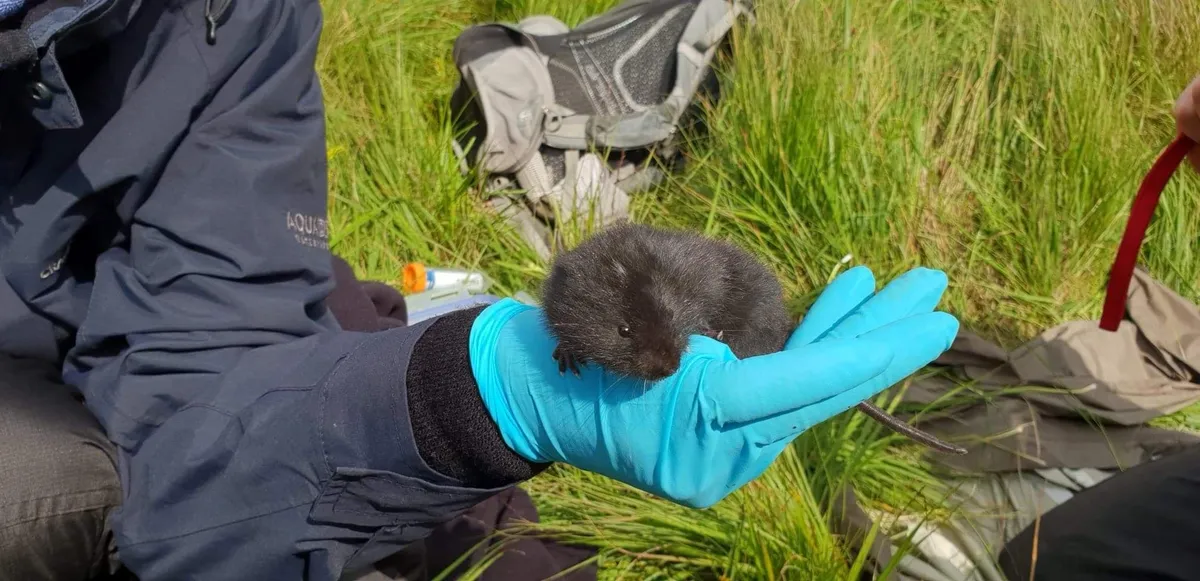
Fossorial water voles are common in parts of continental Europe. These two types of water vole are not separate species or subspecies.
What do water voles eat?
Water voles are herbivorous and eat a variety of plant species in the summer, and roots, bark, berries and food which they’ve stored in underground caches during the winter. British water voles have been recorded eating 227 plants.
An adult water vole weighs between 200-350g on average, and will consume approximately 80% of its body weight every day.
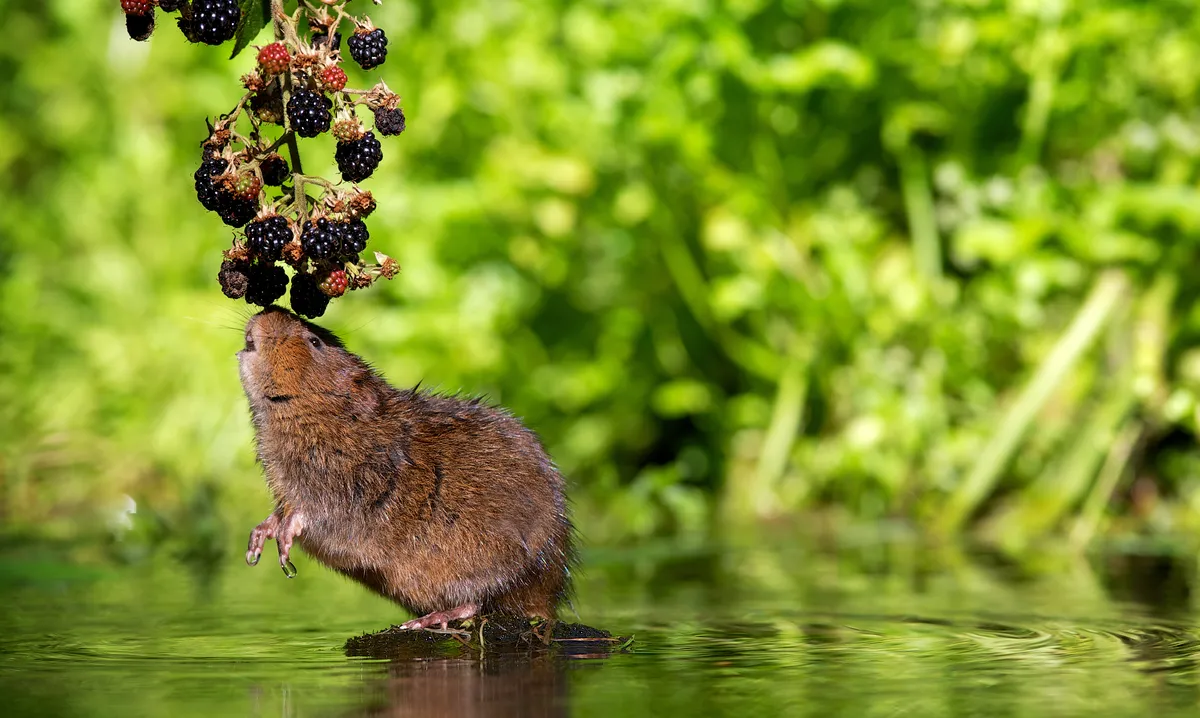
What eats water voles?
Water voles have evolved with a plethora of native predators and as such can provide food for a range of species including fox, otter, stoat, weasel, brown rat, owls, herons and pike. In the Scottish Highlands, golden eagles will also eat water voles.
One of the biggest threats to water voles is predation by the non-native American mink (pictured below), females of which are slender enough to gain access to water vole burrows, thereby providing no escape for the water vole.
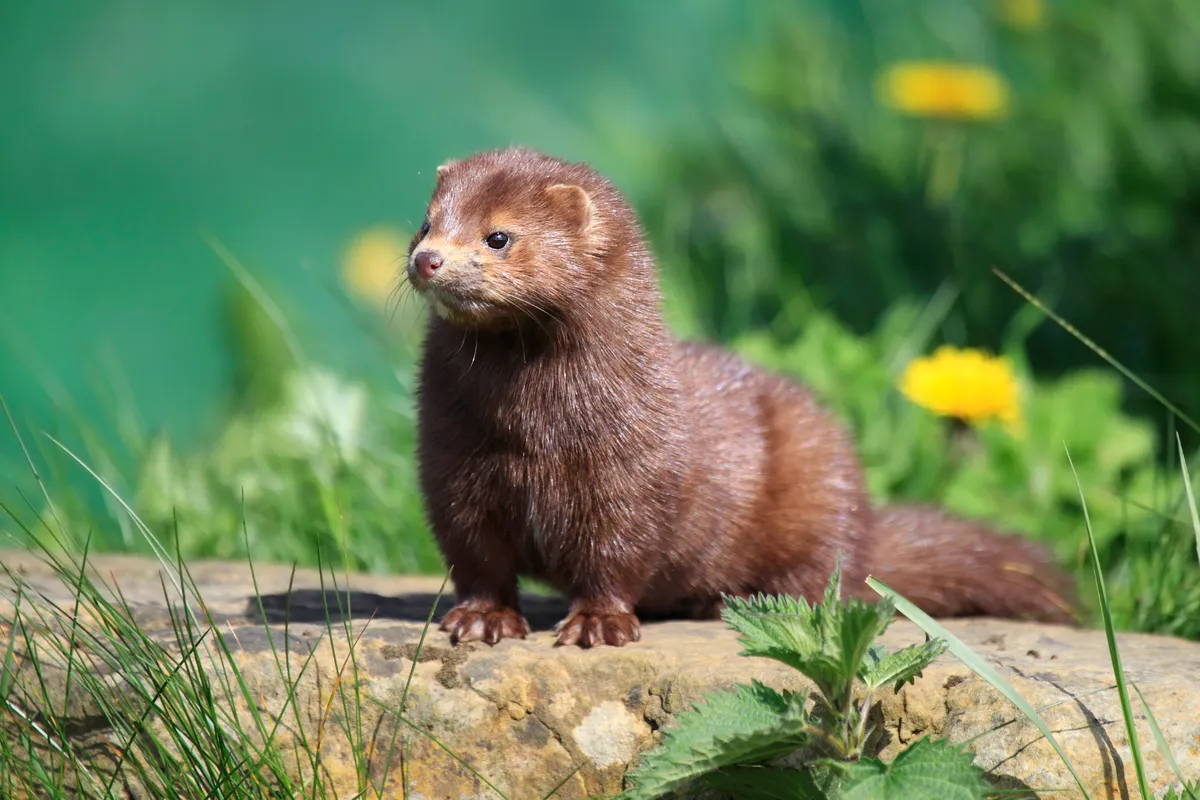
Do water voles hibernate?
Water voles do not hibernate, however they spend a greater proportion of their time underground in winter, where they utilise their stored food caches and rhizomes.
The lack of riparian vegetation which in other seasons is used both for food and protection renders water voles more susceptible to predation when they’re above-ground.
Are water voles territorial?
Water voles are predominantly solitary, and therefore highly territorial with females maintaining territories which are often strung out along a waterway. Although water voles hunker down together throughout winter to keep warm, aggression is triggered again in February and maintained throughout the breeding summer months.
Males will cover the territories of several females, running a gauntlet each time they explore the extents of their own territory.
Scent-marking is therefore hugely important in maintaining territorial boundaries and ensuring all parties know who is around. Both males and females scent mark. They do so by actively scratching bright orange flank glands beneath their fur with their hindfeet before stamping down old droppings at latrines, after which they’ll deposit fresh droppings on top. Scent-marking also occurs during agonistic and sexual encounters.
Water voles will box with their forefeet and roll into a ‘clinch.’ This is more severe in males which can often be physically wounded in the encounter. In females, aggressive behaviour begins with teeth chattering, flank scratching and tail beating, during which time individuals are often completely oblivious to everything around them meaning, if you’re very lucky, it can be possible to watch this behaviour play out in the wild.
How long do water voles live for?
In the wild, water voles live for an average of five months. In captivity, the oldest was two years.
What are baby water voles called?
Baby water voles are called pups.
Water voles have up to five litters a year, each of about six pups, born from April to September in England and May to August in Scotland. Gestation is 20-30 days. The mother is solely responsible for her offspring, receiving no assistance from either the father, or other family members.
How to spot signs of water voles
Water voles favour open wetlands away from tree cover, with lush vegetation that offers both food and protection. Search flat spots on banks for chopped up piles of vegetation and latrines of 1cm-long droppings.
Look for these telltale clues that will reveal if water voles are in your area:
Burrows
Water-vole burrows are about 7cm wide – roughly the same as a Pringles tube. Since the voles dig upwards from below, the entrances are tidy, without spoil heaps on the outside. The grass around the entrance is often nibbled short to make a ‘lawn’.
Droppings
Droppings are particularly distinctive and described as having a ‘tic-tac’ shape which no other British mammal has. Droppings are usually found in latrines and in small heaps close to water. The colour can be variable but they are often dark green or brown, 8-12 mm wide and 4-5 mm thick. Both sexes deposit piles of droppings to mark territory.
Feeding signs
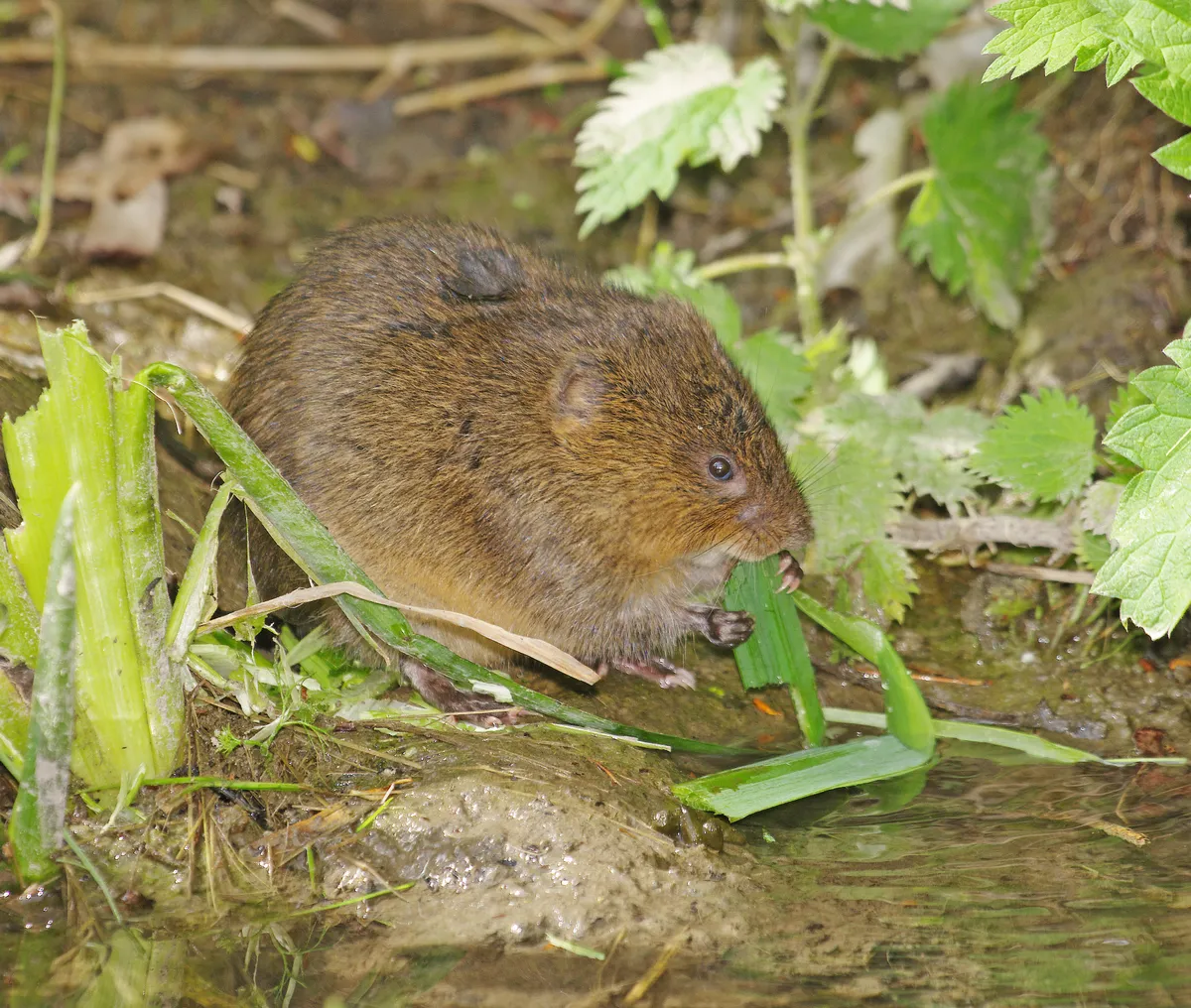
Grass stalks nibbled at a distinct 45-degree angle and left in small piles along runs and tunnels in long, dense vegetation are also a sign, however other species such as field and bank voles also leave this sign (albeit on a smaller scale) so it’s good to find extra evidence to support water vole presence.
Prints

Water-vole prints (right) are a similar size to those of rats (left), so can be tricky to identify, but there is a ‘starry’ shape to a water vole’s paw as the outermost toes splay out on both sides.
Trackways
Water voles push tunnel-like paths through long grass on banksides, and make muddy slipways leading into the water.
Where are the best places in the UK to see water voles?
Water voles are rarely found far from water (unless you happen to find yourself in Glasgow) so head to rivers, streams and lakes to find them – listen out for a distinctive ‘plop’ sound that a water vole makes when it jumps into the water. They can be seen during the day feeding on grasses and reeds, sitting on their hind feet and holding a stalk in front of their paws.
As well as looking for the animal itself, there are a number of field signs (detailed above) to look out for that give clues as to whether a water vole is about.
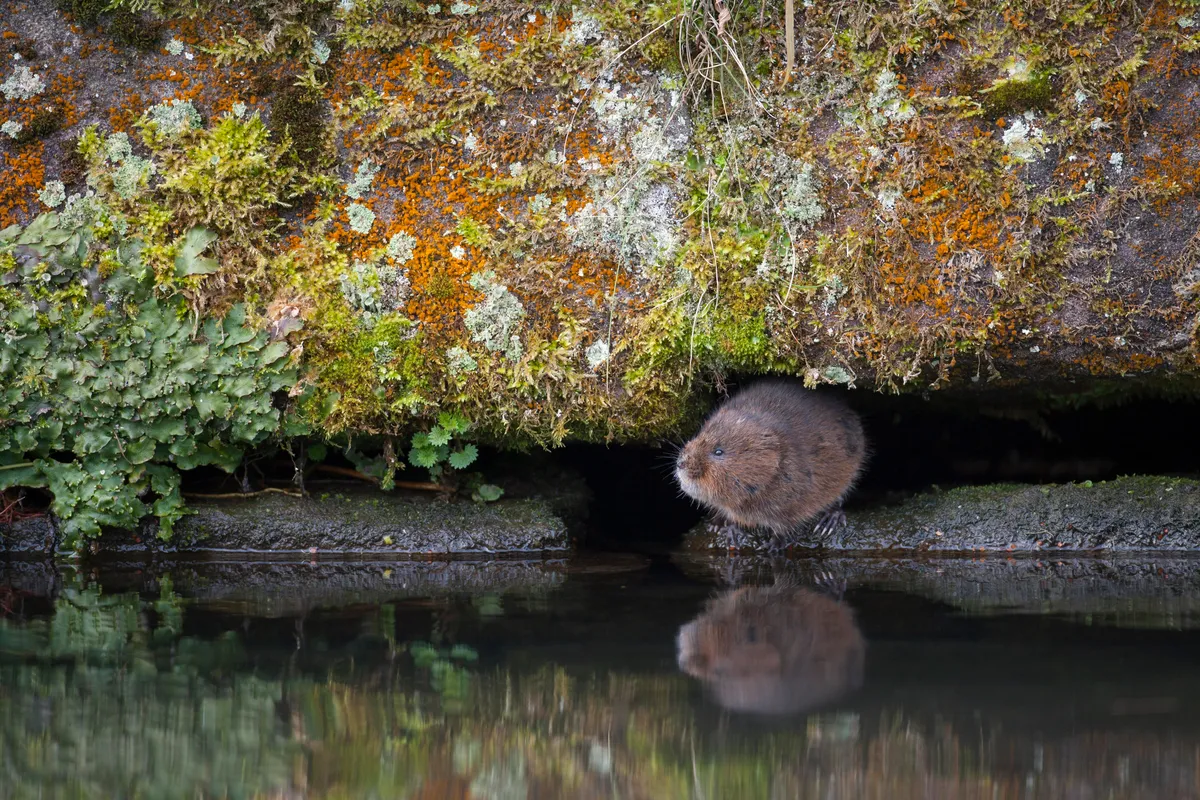
Cardowan Moss, Glasgow, Scotland
Scan the ditches around the wetland section of this reserve for black-furred water voles. This melanistic form is more common in the Scottish Highlands.
Cromford Canal, Derbyshire, England
Set off from the car park at High Peak Junction, and cross to the canal. This is a very popular location for wildlife photographers.
Barton Broad, Norfolk, England
This Norfolk Wildlife Trust reserve lies in the valley of the River Ant, a water-vole hotspot. You might see otters here, too.
RSPB Rainham Marshes, Essex, England
The ditches on this popular reserve in East London host a thriving water-vole population. Check the wooden feeding rafts positioned along the banks.
Cheddar Gorge, Somerset, England
There are several reliable sites for water voles here, the most popular of which is Mill Pond. If you’re travelling up through the gorge, it is on the left-hand side, just past Cox’s Cave.
Arundel WWT, West Sussex, England
Spot the reintroduced water voles from the reedbed walk or, in summer, take a trip in one of the silent electric boats.
Askham Bog Nature Reserve, Yorkshire, England
The boardwalk footpaths make this reserve very accessible. Follow the path to the pond where you will come to a viewing area with a bench - then just sit and wait for the voles to appear.
Cors Caron National Nature Reserve, Tregaron, Wales
Follow the raised boardwalk, suitable for wheelchair users and pushchairs, across the peat bog to search for water voles. Otters and polecats might also be spotted.
West Sutherland, Lairg, Scotland
The watercourses in the Assynt area support sizeable water-vole populations. Voles also inhabit the surrounding area, including the mountainous terrain to the south.
Sandown, Isle of Wight, England
Head to the metal bridge on the Wetland Walk; from there, let it guide you along a network of waterways where riverbanks have been constructed to encourage water voles.
Are water voles endangered?
On the global IUCN Red List, water voles are listed as Least Concern.
However, in 2020 the Mammal Society published the first IUCN authorised regional Red List for Great Britain. In this Red List, the water vole is Endangered in England and Wales, and Near Threatened in Scotland. Overall, in Great Britain water voles are Endangered. They are one of Britain’s fastest declining mammals.
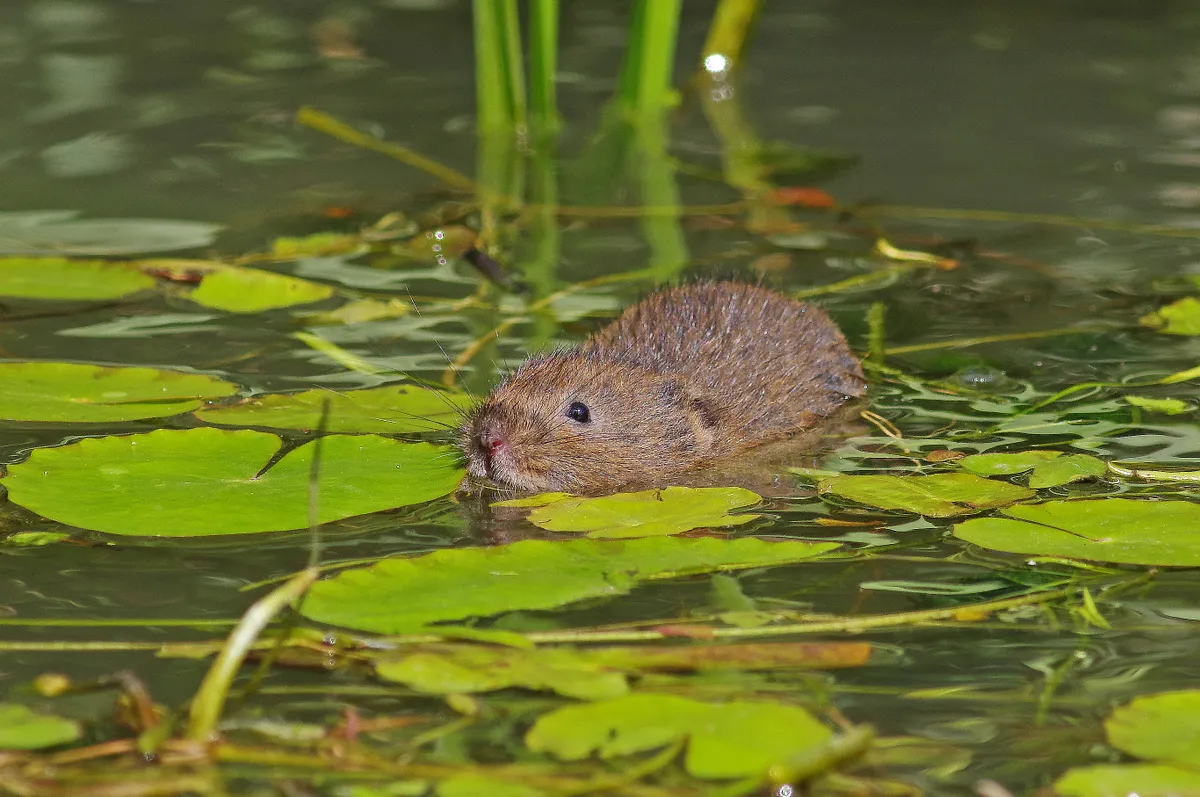
What's being done to help water voles?
The Mammal Society is working on development of a new potential framework for water vole conservation planning that would account for conservation and other land-based planning objectives.
The Mammal Society has also published a Water Vole Mitigation Handbook, the first in a new mitigation guidance series, and endorsed by the Water Vole Steering Group. The handbook outlines an industry standard for all those undertaking surveys, assessing impacts and designing mitigation for water voles.
Some local Wildlife Trusts also have local projects supporting water voles in their area, often with help from volunteers. For example, Berkshire, Buckinghamshire and Oxfordshire Wildlife Trust’s Water Vole Recovery Project is the longest standing local project in the UK dedicated to water vole conservation.
At a national level, Implementation of the National Water Vole Mapping and Database Project (NWVMP) by the Water Vole Steering Group (made up of representatives from organisations including: the Environment Agency, Natural England, The Wildlife Trusts, the People’s Trust for Endangered Species, NatureScot, and Natural Resources Wales) in 2008, brings together water vole data from England and Wales which can be used to monitor their distribution at national and river basin level. It can also identify problem areas locally.
In Scotland there has been a major project of mink control stretching across vast areas of land in the Cairngorms National Park and beyond. With the help of hundreds of volunteers, this project has succeeded in eradicating mink on a large scale and as a consequence, water voles are now recovering in the region.
Please note that external videos may contain ads
Saving Water Voles From Extinction | Wild Rescue | BBC Earth
Where have water voles been reintroduced?
There has been a long history of water vole reintroduction projects, with a systematic experimental project undertaken between 2005-2007 in the Upper Thames tributary region to determine how best to reintroduce water voles successfully.
More recently, landscape-scale projects include a multi-year reintroduction in Kielder (the Restoring Ratty project) and in September 2020 Yorkshire Water were set to release more than 100 water voles at Timble Ings Woods – part of the Nidderdale Area of Outstanding Natural Beauty.
There are also crowd-funding projects to bring back this iconic species in local areas. Sadly however, the majority of water vole reintroductions have not succeeded in the long-term.
Established in 1954, the Mammal Society is a charity that promotes science-led mammal conservation to preserve these charismatic species for future generations. As the only society focused on all of Britain's mammals, it works to identify effective conservation strategies and to provide scientific evidence to determine policy and practice.
Main image: A water vole sitting on the edge of a pipe in Kent, England, UK. © Mark Bridger/Getty
